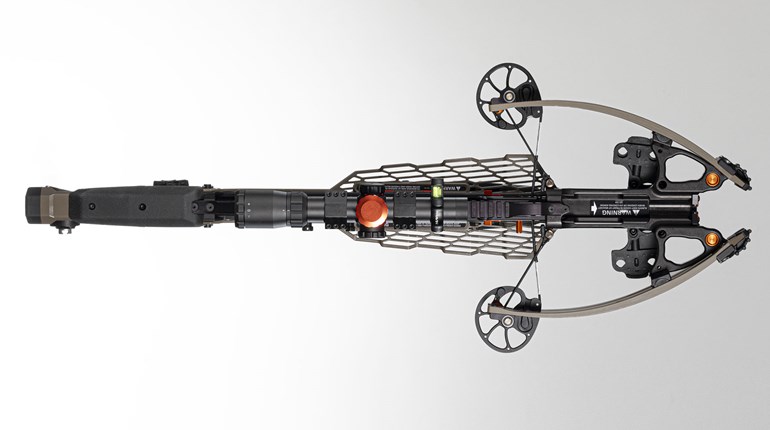Hearing three tom turkeys gobbling in the distance, Whitney Hurt and her guide set up next to a logging trail cutting through the jungle of pine trees, palmetto and brush that is the Mississippi Delta in the spring. Hurt’s guide started calling. One tom moved closer but then faded away, as did another. All this took about an hour, and just as Hurt was thinking the morning’s hunt was going nowhere, bird No. 3 suddenly boomed out a series of deep gobbles—very close.
Her back to a tree, Hurt shifted toward the direction of the calls and got her shotgun ready, while her guide coaxed the tom with clucks and the occasional yelp.
“That tom got pretty close to us—we could tell by his gobbles—but then he just shut up,” Hurt remembers. “I was looking at that brush and it was all green, and then all of a sudden there was this white spot: his head, maybe 20 yards away. I aimed and shot.”
And she bagged her tom.
It wasn’t Hurt’s first tom—she comes from a hunting family and married into another hunting family—but it was the first bird taken at the inaugural Outdoor Women Unlimited (OWU) Annual Turkey Hunt.
Hurt notes that turkeys are among the top game species hunted by OWU’s 5,000-plus female members, especially for an introductory hunt. A big-game hunt, for example, can be intimidating for a first-time hunter, says Hurt. The colder weather and the chance to potentially spend all day in a deer stand can seem like way too much for a newbie.
But spring turkey hunting is much more appealing to the outdoor-oriented women Hurt knows, and the (usually) warmer weather is a real help. More importantly, turkeys provide a better chance for some action, even if it’s only hearing gobbles in the distance.
“I feel like turkey hunting’s a lot more interactive,” says Hurt. “You’re trying to fool that bird into range, calling, and he’s gobbling. You can never get a shot and still have lots of excitement.”
OWU and Hurt are on the leading edge of a national trend. According to U.S. Fish and Wildlife Service (USFWS) surveys of outdoor recreation, there were 116,000 women turkey hunters 16 years old and older in 1996. By 2001, that was up to 174,000 hunters, and, though the number dipped down a bit in 2006, the 2011 USFWS survey revealed an impressive 332,000 women turkey hunters—a doubling of female participation in just 15 years.
Turkey hunting as a whole also has grown over this same period, from 2.189 million hunters (male and female) in 1996, to 3.1 million in 2011, according to USFWS. So while it’s not a huge surprise that overall numbers of women turkey hunters have gone up, they’ve actually increased at a much faster rate compared to male hunters.
According to Richard Aiken, an economist with USFWS’ National Survey office, “The percentage of turkey hunters who were female was 5 percent in 1996, 7 percent in 2001, but was all the way up to 11 percent in 2011.” And these increases are real, he adds, not simply a matter of adjusting for possible sampling errors.
Teresa Carroll, Hunting Heritage Program coordinator for the National Wild Turkey Federation (NWTF), notes that recent surveys also show a growing percentage of women afield for a key reason: to provide food for their families.
“We’re not sure if they are hunting for the meat because of the economy or as a way to provide their families a healthier food source,” says Carroll. “But the data show that, for women, the meat is now a primary reason for the hunt. Being with friends and family used to top the list [as a reason for hunting]. Not now.”
Interestingly, once the plan was formulated to hold an annual turkey hunt, OWU had no problem lining up sponsors to help with equipment and costs. Weatherby provided the shotguns, SA-459s in 20-gauge, Winchester Ammunition the 20-gauge turkey loads, Mississippi-based Longleaf Camo the clothing and Streamlight a variety of flashlights. The Mississippi Department of Tourism heard about the plans and offered logistical and funding assistance to bring the hunt to the Magnolia State. (OWU is a national group, but is based in Alabama.)
“At Weatherby, we feel it’s critical to the growth and longevity of our hunting heritage to promote women hunters and bring attention to their impact as role models to future generations of young women and young men alike,” says Mike Schwiebert, the gunmaker’s vice president of marketing. “I’m sure the majority of the public see hunting and shooting as a predominantly male activity, and I think they’d be surprised to learn women are some of the best shooters and hunters out there.”




































